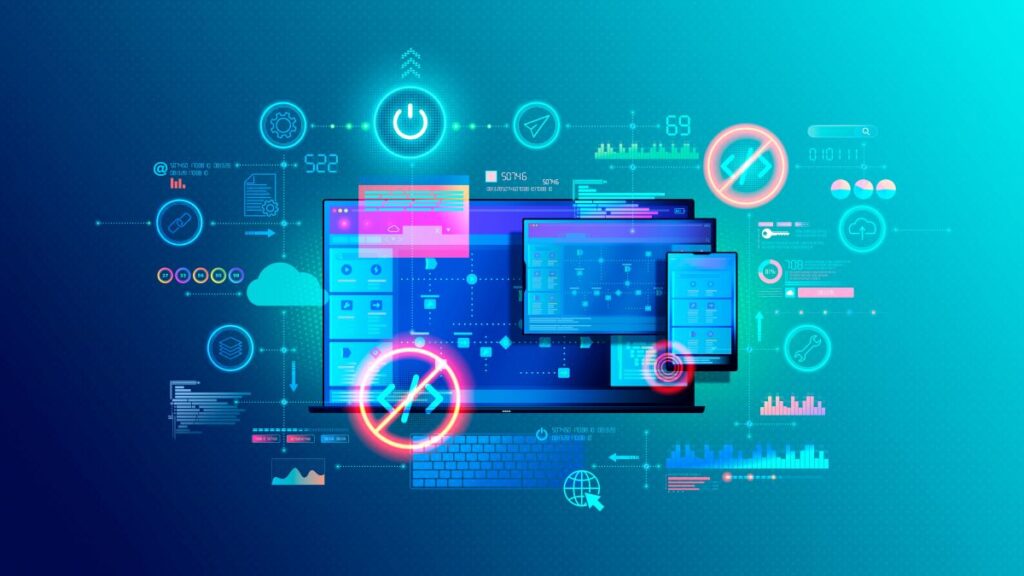Low-code/no-code tools have been in the zeitgeist for years now. These technologies have the potential to streamline tedious software development processes, generate boilerplate code, and provide a visual approach to programming. Abstracting complexity through low-code development could also help bring more non-technical users into the development realm.
These are the promises of low-code automation, but how is it panning out in practice?
O’Reilly recently produced a report, Low-Code and No-Code in the Workplace, that provides helpful insights for those evaluating low-code technologies. Below, we’ll review some of the key takeaways from the report and its associated survey. I also chatted with the report’s author, Mike Loukides, Vice President, Content Strategy at O’Reilly Media, for additional perspectives.
How Low-Code Is Being Used in the Workplace
The report found that 44% of the respondents actively use low-code/no-code tools. Some of the top use cases for low-code/no-code and AI-driven productivity tools include the generation of front-end and backend code and business analytics. Less common use cases include the generation of design and marketing content.
Low-code/no-code can help automatically produce code to save development time (22% of respondents save time writing boilerplate code or scaffolding using low-code). And as I’ve previously reported, data scientists commonly adopt low-code to develop custom data-driven workflows, as well as to collect and cleanse data and analyze trends through automated reports and visuals.
There are various reasons to adopt low-code, but the foremost is to increase agility and decrease time to market, the report finds. Low-code tools can help quickly move ideas into production and automate routine tasks, freeing up programmers for more pressing efforts. Low-code also enables software developers to quickly test more ideas and consider alternatives. Among respondents, 35% simply said that they “wanted to try something new.”

Which companies are the most important vendors in AI and hyperautomation? Check out the Acceleration Economy AI/Hyperautomation Top 10 Shortlist.
Who Uses Low-Code?
Although low-code/no-code is often pitched as a method to provide “superpowers” to non-technical audiences, the data paints a slightly different picture. The report found that 50% of those using design tools identified as developers or tech leads. Only 23% noted that low-code and no-code tools were suitable for beginners and entry-level staff. Furthermore, 11% of respondents say these tools helped staff advance from mid-level to expert, and just 7% said they gave them superpowers.
All these findings demonstrate something we’ve been saying for a while — low-code is no silver bullet. It has a limit. The data also shows that low-code will more often be utilized to augment the workflow of experienced programmers rather than replace the need for professional coders altogether. As evidence, just 10% of organizations were able to plug a skills gap by introducing low-code/no-code tools.
Although low-code can boost the creative potential of knowledge workers, overreliance on a citizen developer strategy has significant limitations, not to mention that it brings nuanced security repercussions. For these reasons, the Stack Overflow CEO has expressed why going all-in on low-code should not be a serious objective.
The report also found interesting trends in cross-specialization. Interestingly, 62% of those using low-code or AI to generate art identified as developers, DevOps professionals, or data analysts. “It certainly looks like low-code and no-code tools are allowing specializations to blur,” according to Loukides.
Low-Code vs. AI
Low code has, in some ways, been usurped by the growing excitement around artificial intelligence (AI). This interest has been accelerated by the new generative AI tools powered by large language models including OpenAI’s ChatGPT and Google’s Bard. These AI initiatives are getting more and more advanced and customizable by the day. For example, at Microsoft Build 2023, Microsoft leaders debuted a Copilot stack that enables developers to build their own AI-assisted Copilots.
The rise of AI-assisted programming raises interesting questions about the role of AI in low code. For example, inserting AI directly into the integrated development environment (IDE) that developers are already accustomed to could be a significant boost to productivity. This might decrease the need to loop in platforms that abstract code with visual elements.
But, instead of completely replacing pre-existing low-code platforms, AI is more likely to augment the low-code experience. For example, Microsoft recently incorporated ChatGPT within its Power Platform. In this vein, generative AI and large language models (LLMs) will probably not replace low-code platforms outright; instead, they will likely be used in a complementary manner throughout the workplace.
It’s also likely that we’ll continue to see strains of low-code emerge that incorporate AI specifically trained around certain business domains, such as accounting, marketing, analytics, and user interface (UI) models.
Low-Code, AI, and a Pinch of Reality
Low-code continues to be adopted throughout the workplace but is no silver bullet. According to the O’Reilly report, low-code/no-code is still not a total replacement for an experienced full-stack developer and is more often adopted by those with technical chops. Furthermore, while low-code is a viable option, it’s not the only means to accelerate development agility.
New advancements around AI should also be considered viable options to accelerate software development. Yet, of course, the effectiveness and security of such new (often untested) AI innovations should be weighed carefully before adoption.
We’re still in the early days of AI. Current models still make incorrect assumptions, they “hallucinate” and will require additional fine-tuning to improve accuracy. “AI needs a way to say there are multiple answers, or no answers, or that the problem statement you’ve given me doesn’t make sense,” said Loukides.
“I think what Microsoft is doing is what we’ll see a lot of,” said Loukides. AI has gradually made its way into many engineering environments and user-facing applications, and looking to the future, we’ll likely see more textual predictions and auto-complete within the digital tools we use. “I think you’re going to see that almost everywhere.”
Looking for real-world insights into artificial intelligence and hyperautomation? Subscribe to the AI and Hyperautomation channel:









